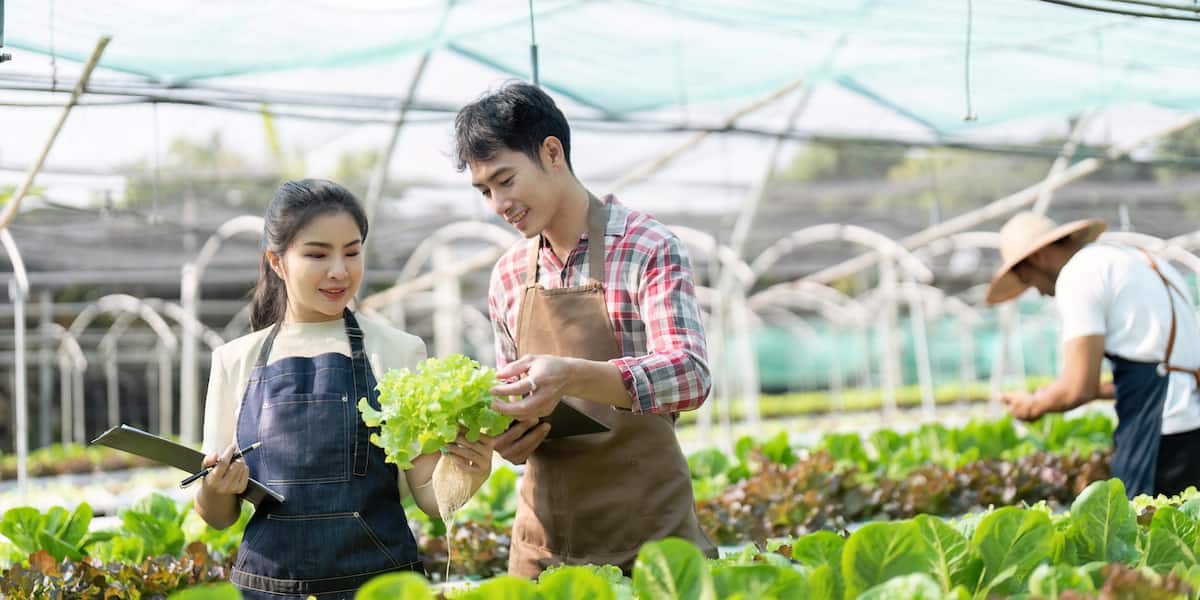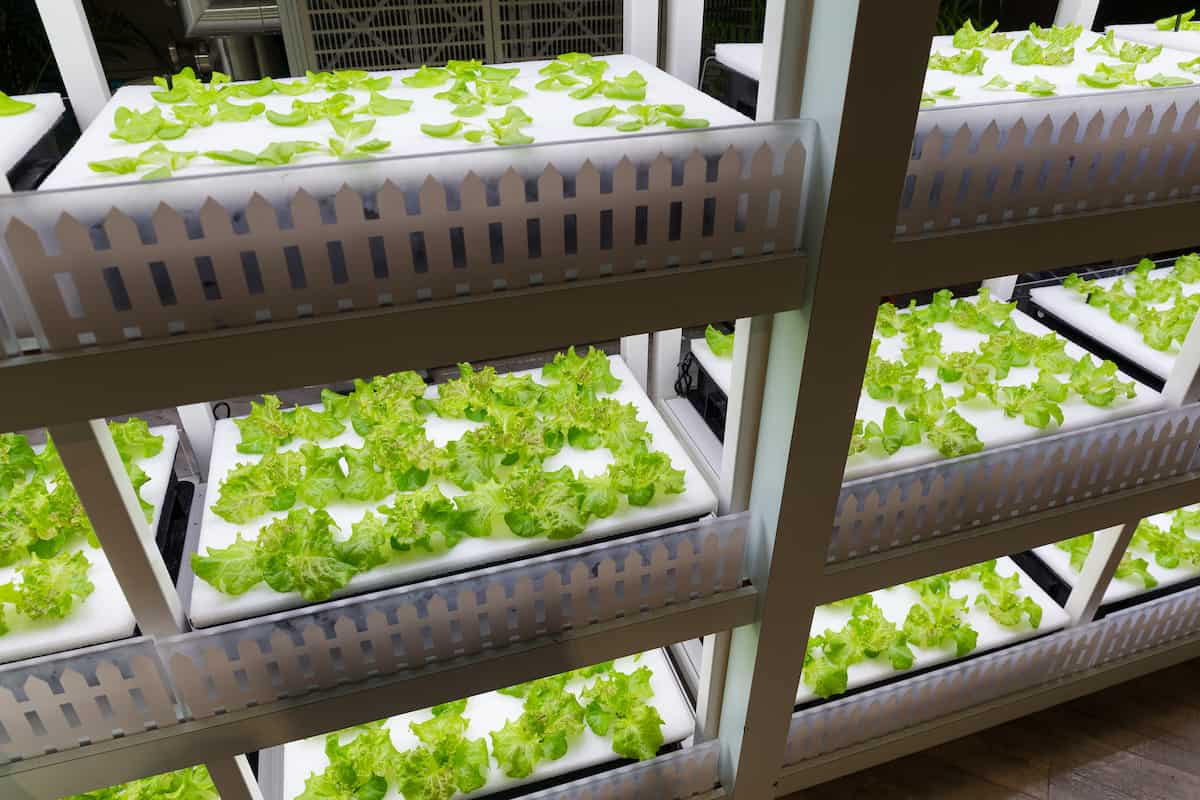Hydroponic farming is a way to grow plants without soil busing water solutionsrich in nutrients. This system is a closed-loop, soil-free method of growing crops in a controlled environment, which allows for precise control of plant nutrients, water, and temperature. In hydroponic farming, plants are grown in nutrient-rich solutions that are constantly monitored and adjusted to ensure optimal growth.

This mfarming methodis highly efficient and allows for year-round crop production, making it a sustainable and cost-effective option for farmers. Hydroponic farming is gaining popularity as a more environmentally friendly and efficient way of producing crops, especially in areas where traditional farming methods may be limited by factors such as water availability or soil quality.
Hydroponic Farming Success Story
What are the Advantages of Hydroponics Farming?
One of the biggest advantages of hydroponic farming is that it can produce higher yields of crops compared to traditional farming methods. This is because hydroponic systems provide plants with precisely controlled nutrients, water, and light levels, which can optimize plant growth and development.
The controlled environment of hydroponic systems also eliminates many factors affecting crop yields in traditional farming, such as pests, diseases, and adverse weather conditions. Hydroponic farming is a very water-efficient method of crop production. Traditional farming methods typically use large amounts of water to irrigate crops, but hydroponic systems recycle water, meaning that less water is required overall.
In fact, hydroponic systems use up to 90% less water than traditional farming methods. This makes hydroponic farming an environmentally friendly option, particularly in areas with limited water resources. Hydroponic farming is a sustainable method of farming, as it eliminates the need for harmful pesticides and herbicides. Hydroponic systems are typically set up in enclosed environments, which means that pests and diseases are less likely to affect crops.
In case you missed it: How to Start Indoor Hydroponic Farming: A Beginners Guide

Success Story of Mr. Michael
Mr. Michael Morgan was a farmer in rural America. His family had been farmers for generations, and Mr. Michael was no exception. However, he had grown tired of traditional farming and was always looking for a more efficient and sustainable way of producing crops. That’s when he stumbled upon hydroponic farming. The hydroponic farming method allowed Mr. Michael to grow crops faster and with less water, making it a more sustainable and cost-effective option. He invested in hydroponic farming and set up his first hydroponic greenhouse on his farm.
Initially, Mr. Michael faced some challenges with his hydroponic farm. He had to invest in high-quality equipment, such as grow lights, pumps, and nutrient solutions. The startup cost was around $50,000, but Mr. Michael knew that it would pay off in the long run. Additionally, he had to train his employees on how to properly manage the hydroponic system, which required a lot of trial and error.
Despite the initial challenges, Mr. Michael’s hydroponic farm was a massive success. The controlled environment allowed him to grow crops year-round, and he was able to produce higher yields than traditional farming methods. He started with growing lettuce but soon expanded to other crops, such as tomatoes, cucumbers, and strawberries.
Mr. Michael’s hydroponic farm became popular among local restaurants and grocery stores, which were always looking for fresh, locally-grown produce. HSo hestarted selling his crops to these businesses, providing a steady income stream for his farm. In addition, he decided to set up a farmer’s market on his farm, where customers could purchase his hydroponic produce directly.
Mr. Michael realized he needed to expand his operations as his hydroponic farm grew. He decided to set up more greenhouses on his farm, which required an additional investment of $100,000. However, with the success of his initial hydroponic farm, he secured a loan from the bank to fund his expansion. Mr. Michael could produce even more crops and increase his revenue with the new greenhouses. His hydroponic farm was now generating an annual revenue of $500,000, with a profit margin of 30%.
Most of his revenue came from selling his produce to local businesses and the farmer’s market, but he also started exporting some of his crops to nearby states. Mr. Michael’s hydroponic farm was both a financial and environmental success. He could produce crops using 90% less water than traditional farming methods, and his hydroponic system did not require any harmful pesticides or herbicides. This made his produce healthier for his customers and better for the environment.
Financial Aspects of Mr. Michael’s Hydroponic Farm
Startup cost: Mr. Michael’s initial investment in hydroponic farming was around $50,000, which included the cost of equipment such as grow lights, pumps, and nutrient solutions.
Revenue streams: Mr. Michael’s hydroponic farm generated revenue from multiple streams, including selling his produce to local restaurants and grocery stores, exporting to other states, and setting up a farmer’s market on his farm.
Revenue growth: Mr. Michael’s revenue increased significantly as his hydroponic farm grew. His hydroponic farm generated annual revenue of $400,000 to $ 500,000, a significant increase from his initial investment.
Profit margin: Mr. Michael’s hydroponic farm had a profit margin of 30%, which is a strong financial performance for a farm.
Expansion costs: As Mr. Michael’s hydroponic farm grew, he needed to invest in expanding his operations. Setting up more greenhouses on his farm required an additional investment of $100,000, which he could secure through a bank loan.
Environmental benefits: Mr. Michael’s hydroponic farm also had significant environmental and financial benefits. He could produce crops using 90% less water than traditional farming methods, and his hydroponic system did not require any harmful pesticides or herbicides.
Sustainability: Mr. Michael’s hydroponic farm was a sustainable business with a long-term potential for growth and profitability. By adopting innovative and sustainable farming methods, Mr. Michael created a good business for the environment and his bottom line.
In case you missed it: Frequently Asked Questions About Soilless Farming (Hydroponics)

Conclusion
Mr. Michael’s success story in hydroponic farming is proof of the potential of this innovative and sustainable farming method. With a willingness to invest, learn, and innovate, Mr. Michael transformed his traditional farm into a modern and profitable hydroponic farm.
- Feed Your Flock for Less: Top 10 Tips to Save on Chicken Feed
- Ultimate Guide to Ossabaw Island Hog: Breeding, Raising, Diet, and Care
- Hatching Answers: The Top 10 Reasons Your Chickens Aren’t Laying Eggs
- Eggs and Economics: Breaking Down the Cost of Raising Backyard Chickens
- Defend Your Greens: Proven Methods to Keep Iguanas Out of Your Garden
- Ultimate Guide to Cinnamon Queen Chicken: A Comprehensive Guide for Beginners
- Ultimate Guide to California Tan Chicken: Breeding, Raising, Diet, Egg-Production and Care
- Ultimate Guide to Marsh Daisy Chicken: Breeding, Raising, Diet, and Care
- 10 Types of Chicken Farming Businesses You Can Start for Profits